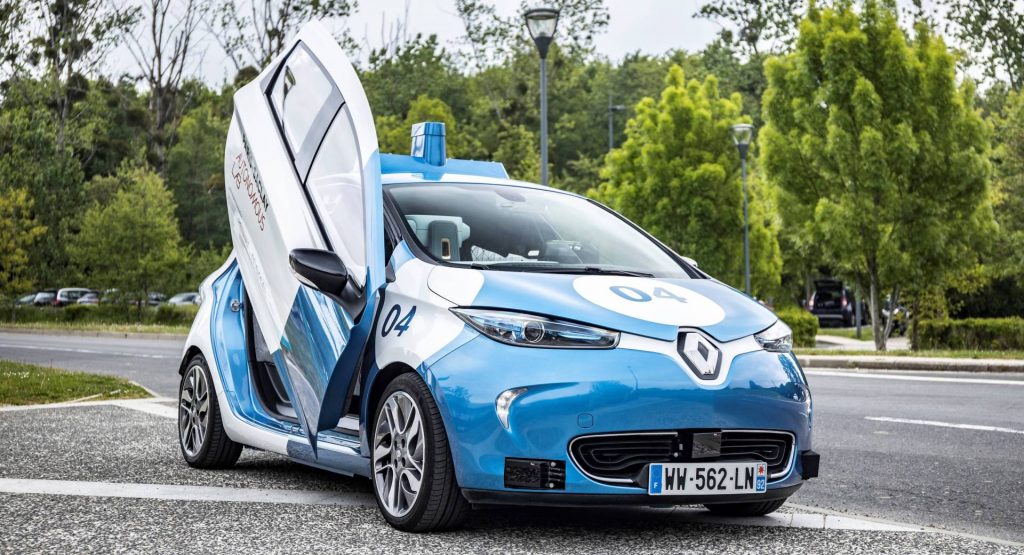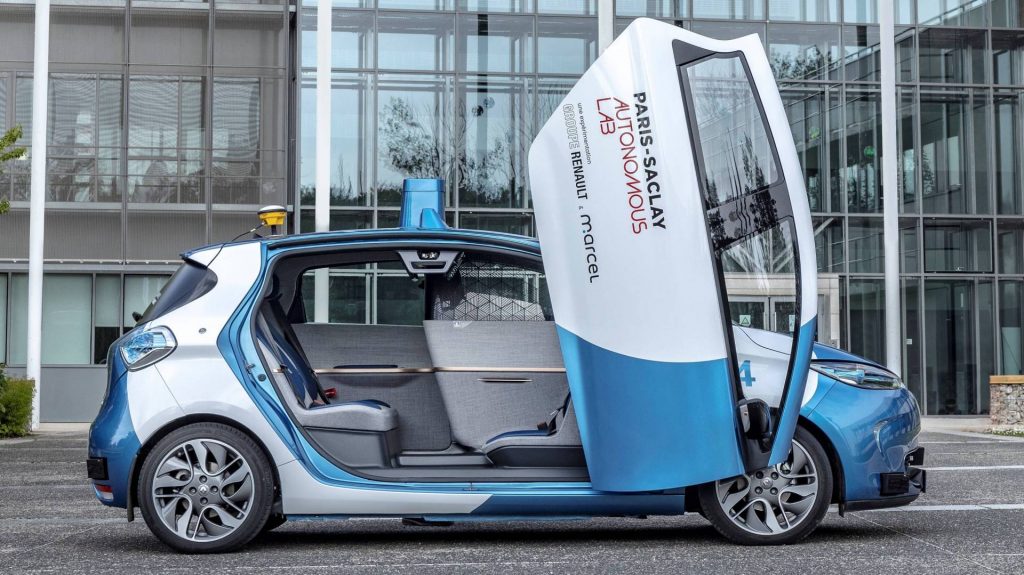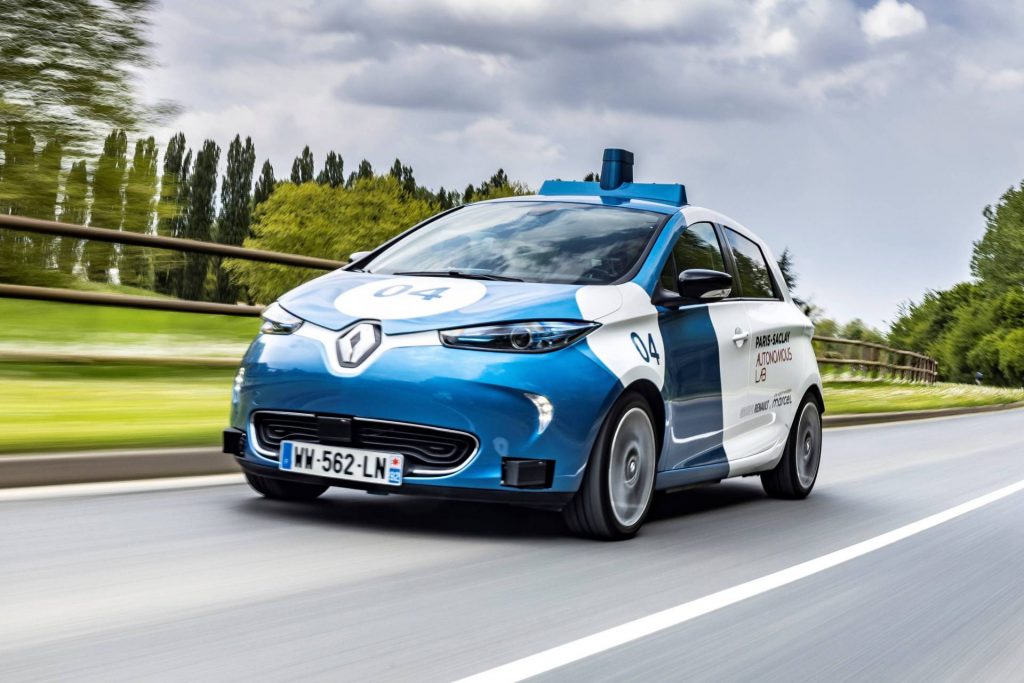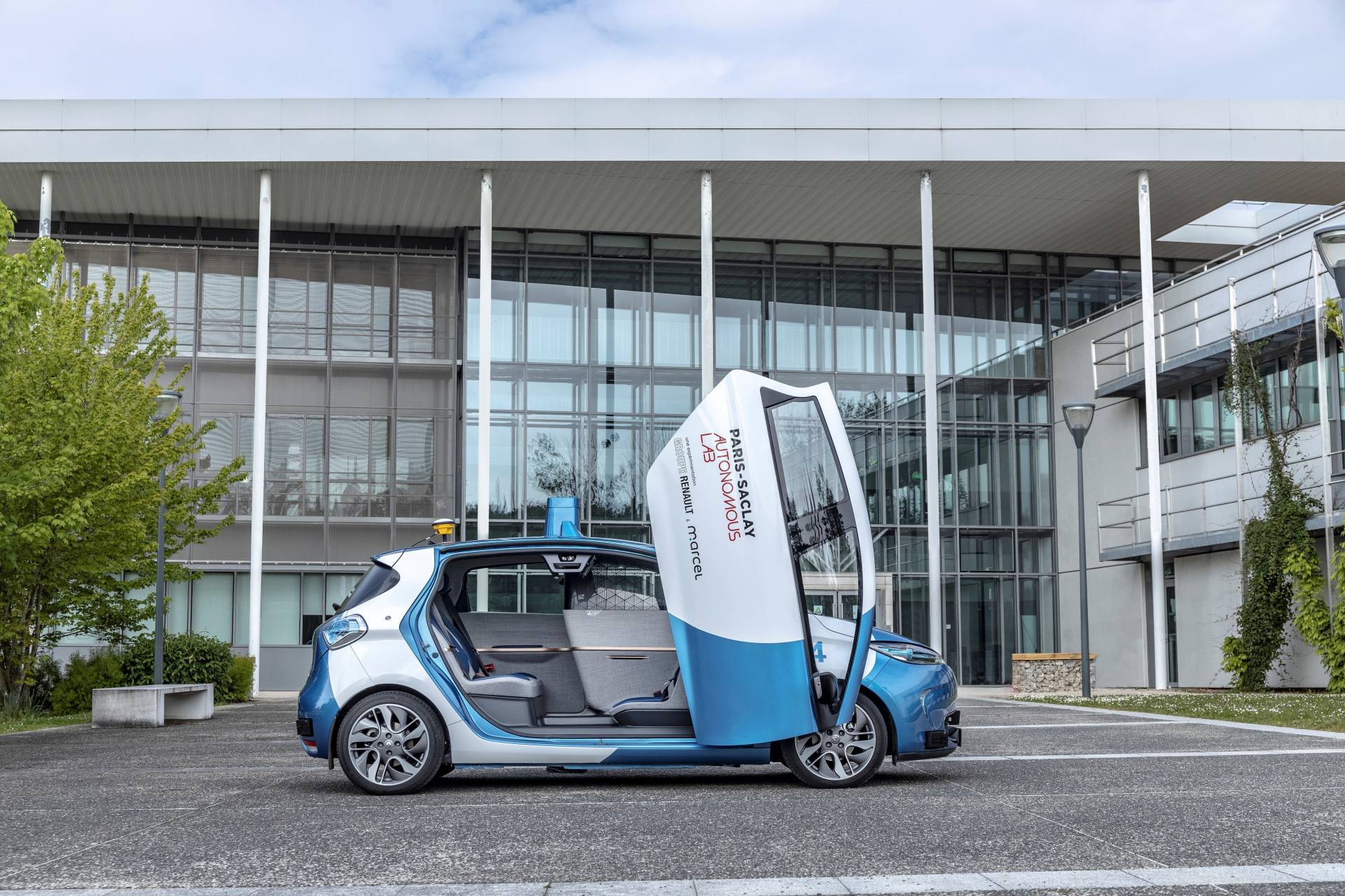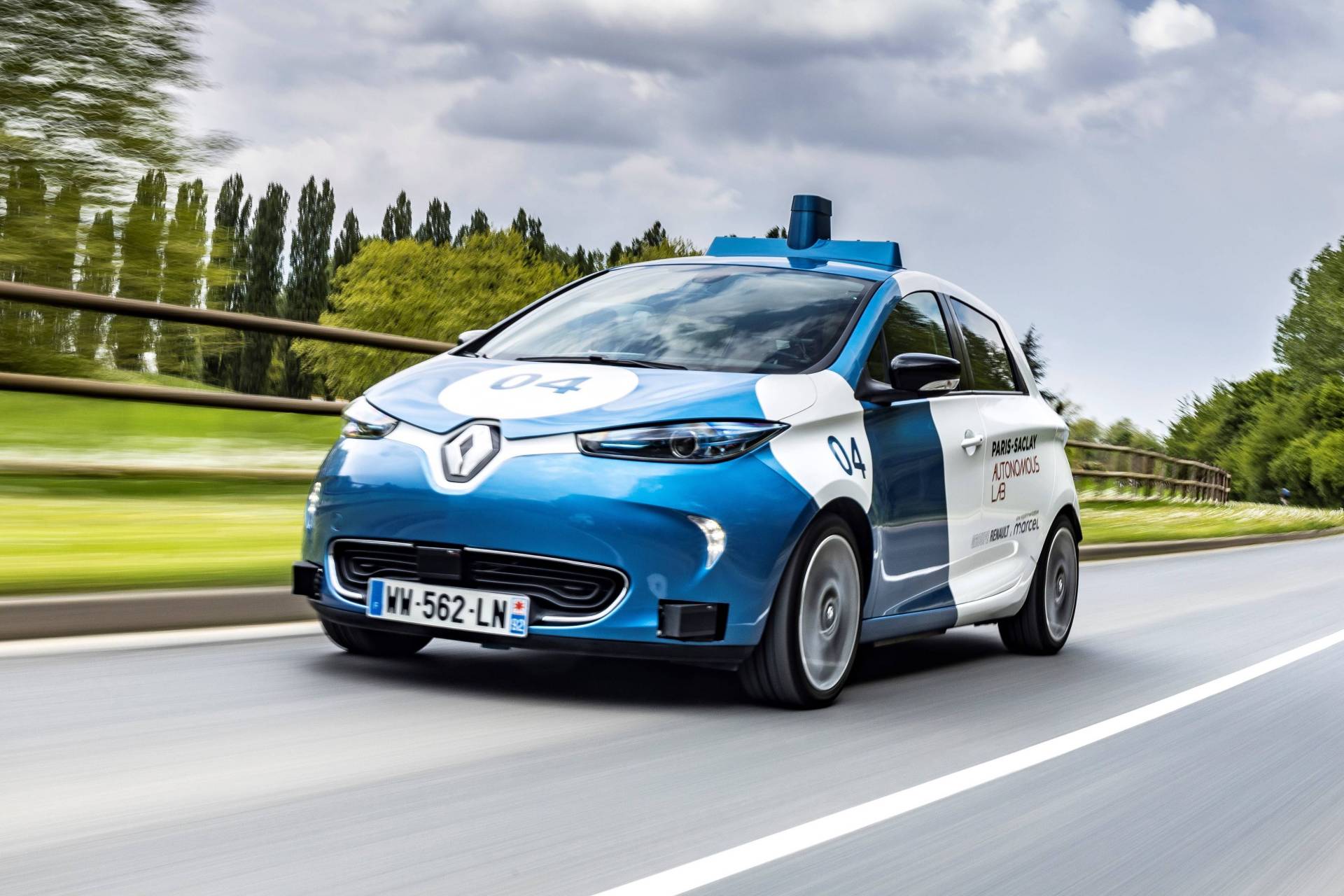Renault and several partners have started “The Paris-Saclay Autonomous Lab” project which aims to make self-driving transportation a reality in France.
The project aims to develop new mobility services using dedicated lane and public and campus streets to supplement the existing Saclay Plateau transportation systems.
Made possible by Renault’s collaboration with the Transdev Group, IRT SystemX, Institut VEDECOM and the University of Paris-Saclay, the trial program uses three Renault Zoe Cab self-driving prototypes and a Transdev-Lohr i-Cristal autonomous shuttle.
Also Watch: Renault Zoe EV Might Be 7 Years Old But Still Gets The Thumbs Up
The latter will provide collective transportation service for up to 16 passengers at a time during the night when the regular transportation systems are not functioning. As for the three Zoe Cab vehicles, they will be used for a daytime on-demand car service for the Paris-Saclay urban campus.
People can hail a car or book one ahead of time using a dedicated Marcel smartphone app. A prototype autonomous electric Renault Zoe Cab vehicle will then come to pick up the user and then drop them off at the destination. The service is designed to provide a large number of pick-up and drop-off points, which do not interfere with other traffic and are located near the most frequented campus areas.
The all-electric Renault Zoe Cab and Transdev-Lohr i-Cristal shuttle autonomous vehicles are equipped with GPS-type sensors, Lidar, cameras, inertial units, and self-driving software. The technology enables them to detect other vehicles and pedestrians, safely pass through intersections and roundabouts, detect deceleration and recognize traffic lights. In the specified areas they operate they provide full autonomy, although a “safety operator” is present at all times inside the vehicle.
Renault does not provide additional details about the Zoe Cab autonomous prototype but it’s easy to spot the changes compared to the regular production model. Those include the massive Lambo-style door on the right-hand side which eases access to the cabin thanks to the elimination of the B-pillar. The interior features three passenger seats, two facing forward and one facing rearward, as well as a “driver’s seat” that is isolated from the passenger compartment, presumably for safety reasons.



